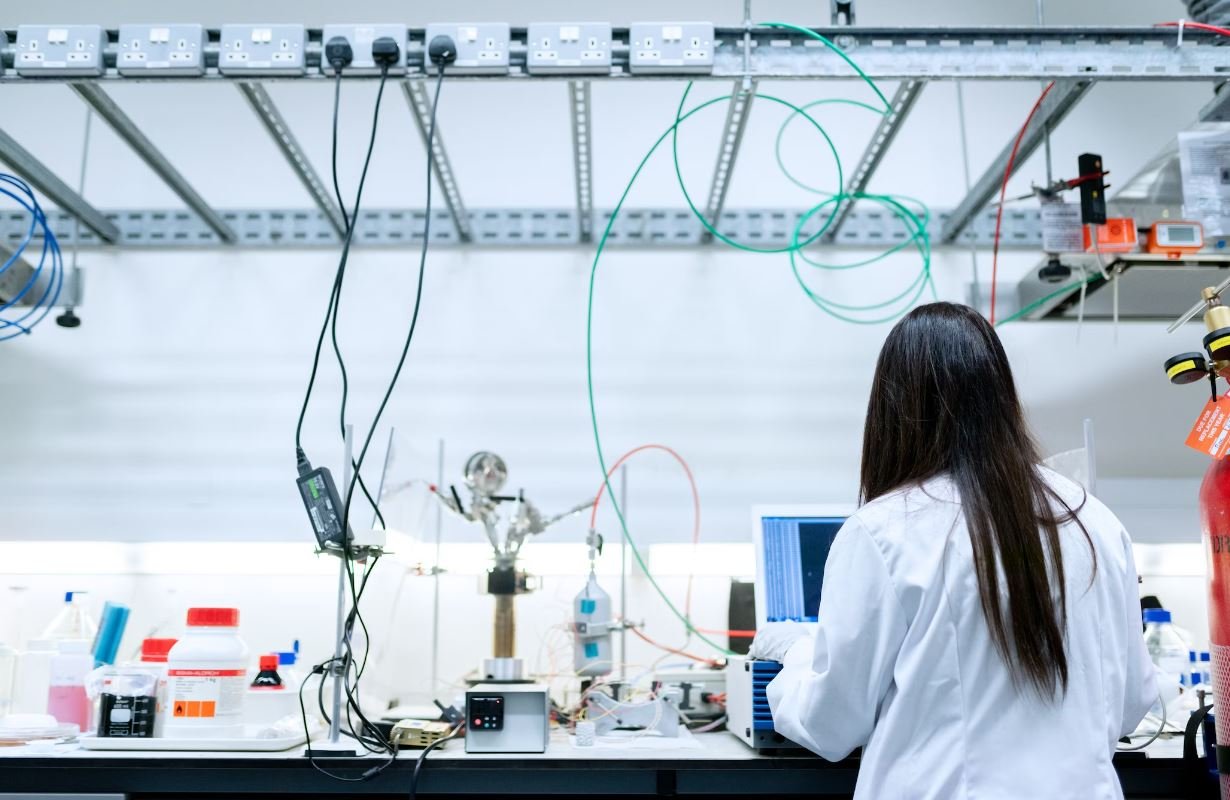Supervised Learning vs Unsupervised Learning in Machine Learning
Machine learning algorithms can be broadly classified into two main categories:
supervised learning and unsupervised learning.
These approaches have different goals and methodologies, and understanding their differences is crucial in the field of machine learning.
Key Takeaways:
- Supervised learning uses labeled data to train a model, while unsupervised learning uses unlabeled data.
- Supervised learning is used in situations where the desired output is known, while unsupervised learning is used to explore and discover patterns in data.
- Supervised learning requires a predefined set of features and a known target variable, while unsupervised learning does not have a specific target variable.
In supervised learning, the algorithm is provided with a labeled dataset, where each data instance is associated with a corresponding target variable.
The goal of supervised learning is to learn a function that maps the input features to the output variable, based on the provided examples.
*Supervised learning can be seen as a process of learning from examples and then generalizing that knowledge to make predictions on new, unseen data*.
On the other hand, in unsupervised learning, the data provided to the algorithm is unlabeled.
The goal of unsupervised learning is to explore the structure or patterns hidden in the data without the presence of a predefined target variable.
*Unsupervised learning can be seen as a method of discovering hidden patterns or grouping similar instances together without any explicit guidance*.
Supervised Learning
In supervised learning, the learning algorithm is trained using a known set of input-output pairs.
These pairs consist of input features, also known as predictor variables, and their corresponding output, which is the target variable.
The algorithm analyzes the patterns and relationships between the input features and the target variable in order to build a model that can make predictions on new, unseen data.
Supervised learning can be further divided into two main problems: classification and regression.
Classification involves predicting discrete categories or labels, while regression involves predicting continuous numeric values.
*In supervised learning, the algorithm learns from labeled data and can be used to classify emails as spam or non-spam based on patterns it learns from previously labeled emails*.
Unsupervised Learning
Unsupervised learning, on the other hand, deals with unlabeled data and does not have a predefined target variable.
Instead of trying to predict an outcome, the algorithm focuses on finding hidden patterns, relationships, or structures in the data.
Unsupervised learning can be used for tasks such as clustering, dimensionality reduction, and anomaly detection.
One popular technique in unsupervised learning is k-means clustering, which aims to group similar instances based on their features or attributes.
*Unsupervised learning can help identify customer segments in a dataset, allowing businesses to personalize their marketing strategies for different groups of customers*.
Comparison: Supervised Learning vs Unsupervised Learning
| Supervised Learning | Unsupervised Learning | |
|---|---|---|
| Data Availability | Labeled data is required. | Unlabeled data is used. |
| Objective | Predict the correct output based on input features. | Discover patterns, relationships, or structures in the data. |
| Target Variable | Known and provided in the labeled dataset. | Not required, as the focus is on unsupervised exploration. |
Advantages and Disadvantages
- Supervised Learning Advantages:
- Well-defined objectives and clear evaluation metrics.
- Can achieve high accuracy with sufficient labeled data.
- Can handle both classification and regression problems.
- Supervised Learning Disadvantages:
- Requires labeled data, which can be time-consuming and costly to obtain.
- May not perform well when faced with unseen data that differs significantly from the training set.
- May overfit the training data if the model is too complex.
- Unsupervised Learning Advantages:
- Does not require labeled data, making it easier to obtain and work with.
- Can uncover hidden patterns or insights without prior knowledge.
- Can handle large amounts of unlabeled data efficiently.
- Unsupervised Learning Disadvantages:
- Difficult to evaluate or measure the performance of the algorithm objectively.
- Results can be highly subjective and dependent on the algorithm parameters.
- May not produce meaningful results if the data does not contain any distinct patterns.
Both supervised and unsupervised learning have their own strengths and weaknesses, and the choice between the two depends on the specific problem and data at hand.
*Understanding the differences between supervised and unsupervised learning techniques can help data scientists choose the right approach for their machine learning tasks*.
To summarize, supervised learning is used when the desired output is known and labeled data is available, while unsupervised learning is used to explore data and discover patterns without a predefined target variable.

Common Misconceptions
Supervised Learning vs Unsupervised Learning in Machine Learning
One common misconception people have regarding supervised and unsupervised learning in machine learning is that they are only suitable for specific types of problems. In reality, both supervised and unsupervised learning algorithms can be applied to a wide range of problem domains, depending on the availability and nature of the data.
- Supervised learning can be used for classification or regression tasks, such as predicting credit risk or determining the price of a house.
- Unsupervised learning can be utilized for tasks like clustering, dimensionality reduction, or anomaly detection.
- Both supervised and unsupervised learning approaches can be combined in certain cases to achieve more complex analysis and insights.
Another misconception is that supervised learning requires labeled data, and unsupervised learning only works with unlabeled data. While it is true that supervised learning algorithms require labeled data, unsupervised learning algorithms can also handle labeled data and leverage it for better analysis.
- Unsupervised learning algorithms can use the labels as extra information to enhance the clustering or pattern discovery process.
- Labeled data can also be utilized in unsupervised learning for evaluation and quality assessment of learned models.
- However, unsupervised learning algorithms are more commonly used when labeled data is not available or is costly to obtain.
A third misconception is that supervised learning algorithms always outperform unsupervised learning algorithms due to having access to labels during training. While supervised learning can often achieve higher accuracy for specific tasks, it is not necessarily better in all scenarios.
- Unsupervised learning algorithms can discover hidden patterns and structures in the data, leading to new insights and knowledge discovery.
- Supervised learning may require manually labeled data, which can be time-consuming and expensive to obtain.
- Unsupervised learning can be more flexible and adaptable to changes in the data distribution, making it suitable for dynamic environments.
Another misconception is the belief that supervised learning is always more interpretable than unsupervised learning. While it is true that supervised learning models are often easier to interpret and explain due to the availability of labels, this does not mean that unsupervised learning models are inherently opaque.
- Unsupervised learning algorithms can generate clusters or visualizations that provide valuable insights into the underlying data structure.
- Unsupervised learning can be used for exploratory analysis, facilitating the discovery of unexpected patterns or outliers.
- Both supervised and unsupervised learning models can be assessed and interpreted using various techniques, depending on the specific algorithms and problem domains.
A final common misconception is that supervised learning and unsupervised learning are mutually exclusive approaches. In reality, these two types of learning can be combined to create hybrid models, leveraging the strengths of both.
- Unsupervised learning can be used as a preprocessing step to extract useful features or reduce the dimensionality of the data before applying supervised learning.
- Supervised learning can be used to fine-tune unsupervised models or validate the discovered patterns and structures.
- The combination of both approaches can provide more robust and accurate models in complex problems.

Table: Comparison of Supervised and Unsupervised Learning
Supervised learning and unsupervised learning are two fundamental approaches in machine learning. Supervised learning involves training a model using labeled examples, while unsupervised learning involves finding patterns or structures in unlabeled data. The following table provides a comparison between supervised and unsupervised learning:
“`
| Aspect | Supervised Learning | Unsupervised Learning |
|---|---|---|
| Input Data | Labeled | Unlabeled |
| Goal | Predict or classify based on known labels | Discover patterns or structures in data |
| Training | Requires labeled examples for training | Does not require labeled examples |
| Output | Provides prediction or classification | Provides insights or grouping information |
| Examples | Handwritten digit recognition, email spam filtering | Market segmentation, anomaly detection |
| Computational Complexity | Usually higher due to the need for labeled data | Can be less complex as it does not require labels |
| Guidance | Uses feedback from labeled data | Relies on inherent patterns within data |
| Applications | Commonly used in classification and regression problems | Applicable in clustering and dimensionality reduction |
| Accuracy | Can achieve high accuracy if trained with quality labels | Dependent on the quality and nature of unlabeled data |
“`
Table: Supervised Learning Algorithms
Supervised learning algorithms are designed to learn from labeled data and make predictions or classifications. The following table presents some popular supervised learning algorithms:
“`
| Algorithm | Application | Advantages |
|---|---|---|
| Linear Regression | Predicting numerical values | Simple interpretation and fast computation |
| Logistic Regression | Binary classification problems | Efficient and provides probability estimates |
| Decision Trees | Classification and regression problems | Provide intuitive insights and handle non-linear data |
| Random Forest | Complex classification and regression tasks | Combines multiple decision trees for improved accuracy |
| Support Vector Machines | Classification and regression tasks | Effective in high-dimensional spaces and handling outliers |
“`
Table: Unsupervised Learning Techniques
Unsupervised learning techniques assist in discovering patterns or structures in unlabeled data. The following table highlights some widely used unsupervised learning techniques:
“`
| Technique | Application | Advantages |
|---|---|---|
| K-Means Clustering | Data grouping and segmentation | Simple and efficient algorithm for clustering |
| Hierarchical Clustering | Identifying hierarchical relationships | Produces dendrograms for data visualization |
| Principal Component Analysis (PCA) | Dimensionality reduction | Helps capture essential features of complex data |
| Association Rule Mining | Finding interesting associations in data | Useful for market basket analysis and recommendation systems |
| Hidden Markov Models | Sequence modeling and pattern recognition | Applicable in speech and handwriting recognition |
“`
Table: Supervised and Unsupervised Learning Comparison in Real-Life Applications
The utilization of supervised and unsupervised learning varies based on their strengths and suitability in various real-life applications. The following table showcases some common applications and the most suitable learning approach:
“`
| Application | Supervised Learning | Unsupervised Learning |
|---|---|---|
| Image Classification | Training a model to recognize objects | Discovering visual structures or segments |
| Sentiment Analysis | Predicting sentiment polarity in text | Exploring natural clusters of sentiment in data |
| Anomaly Detection | Recognizing unusual behavior or events | Identifying outliers or abnormal patterns |
| Credit Scoring | Predicting creditworthiness of applicants | Identifying credit profile groups without labels |
| Market Segmentation | Categorizing customers based on features | Identifying natural groupings in customer data |
“`
Table: Advantages and Disadvantages of Supervised Learning
Supervised learning offers several advantages and disadvantages to consider when applying it in practice. The following table outlines the pros and cons of supervised learning:
“`
| Advantages | Disadvantages |
|---|---|
| Can achieve high accuracy with quality labeled data | Dependent on the availability of labeled data |
| Provides direct feedback through labeled examples | Requires expert labeling, which can be costly |
| Allows predictability and controllability | May overfit the model to specific training data |
| Well-suited for classification and regression problems | May be limited in handling complex and unstructured data |
| Can make predictions on unseen data with trained model | Difficulty in handling class imbalance scenarios |
“`
Table: Advantages and Disadvantages of Unsupervised Learning
Unsupervised learning has its own set of advantages and disadvantages, which impact its effectiveness in different scenarios. The following table highlights the pros and cons of unsupervised learning:
“`
| Advantages | Disadvantages |
|---|---|
| Finds hidden patterns or structures in unlabeled data | Lacks direct feedback from expert labels |
| Does not rely on labeled examples, reducing labeling cost | Difficulty in assessing the quality of results |
| Allows for exploratory and independent analysis | May not provide precise or definite outputs |
| Useful in detecting anomalies or outliers | Relies heavily on the suitable choice of algorithms |
| Applicable in clustering and dimensionality reduction | Relatively more challenging to evaluate performance |
“`
Table: Supervised vs. Unsupervised Learning: Key Differences
Supervised learning and unsupervised learning differ in several key aspects, leading to distinct use cases. The following table presents the notable differences between supervised and unsupervised learning:
“`
| Aspect | Supervised Learning | Unsupervised Learning |
|---|---|---|
| Training Data | Labeled | Unlabeled |
| Goal | Predicting or classifying based on known labels | Discovering patterns or structures in data |
| Feedback | Labeled examples provide direct feedback | No direct feedback due to lack of labels |
| Training Complexity | Usually higher due to the need for labeled data | Can be less complex as it does not require labels |
| Applications | Commonly used in classification and regression | Applicable in clustering and dimensionality reduction |
“`
Table: Popular Algorithms for Supervised and Unsupervised Learning
Supervised and unsupervised learning employ a variety of algorithms based on their respective objectives. The following table highlights some renowned algorithms for both learning approaches:
“`
| Learning Approach | Popular Algorithms |
|---|---|
| Supervised Learning | Linear Regression, Logistic Regression, Decision Trees, Random Forest, Support Vector Machines |
| Unsupervised Learning | K-Means Clustering, Hierarchical Clustering, Principal Component Analysis (PCA), Association Rule Mining, Hidden Markov Models |
“`
Supervised learning and unsupervised learning serve distinct purposes in machine learning. Supervised learning utilizes labeled data to make predictions or classifications, while unsupervised learning uncovers hidden patterns in unlabeled data. The selection between these approaches depends on the availability and nature of the data, as well as the specific problem domain. By understanding their differences and the range of algorithms associated with each approach, practitioners can effectively apply machine learning techniques to solve various real-world challenges.
Frequently Asked Questions
What is supervised learning in machine learning?
Supervised learning is a technique where a model is trained using labeled examples. The model learns to make predictions by mapping input data to the correct output labels. In this approach, the training data includes both input features and corresponding target labels.
What is unsupervised learning in machine learning?
Unsupervised learning is a technique where a model is trained on unlabeled data. Unlike supervised learning, unsupervised learning algorithms aim to uncover hidden patterns or structures within the data without any specific target labels. The model learns to identify correlations and group similar data points together without prior knowledge.
What are the main differences between supervised and unsupervised learning?
The primary difference between supervised and unsupervised learning lies in the availability of labeled data. Supervised learning relies on labeled examples, allowing the model to predict specific outputs. On the other hand, unsupervised learning works with unlabeled data, and the model learns to find patterns or group data based on similarities.
What are some common applications of supervised learning?
Supervised learning finds various applications, including but not limited to:
1. Email spam filtering
2. Stock market prediction
3. Image classification
4. Text sentiment analysis
5. Speech recognition
What are some common applications of unsupervised learning?
Unsupervised learning is applied in several domains, such as:
1. Customer segmentation
2. Anomaly detection
3. Document clustering
4. Recommendation systems
5. Data visualization and dimensionality reduction
Can supervised and unsupervised learning be combined?
Yes, supervised and unsupervised learning techniques can be combined to leverage the strengths of both approaches. This hybrid approach is known as semi-supervised learning. By combining labeled and unlabeled data, the model can learn from the limited labeled data and generalize patterns from the vast unlabeled data.
Which approach is more suitable for a scenario with labeled data?
If labeled data is available, supervised learning is generally more suitable. The availability of target labels enables the model to learn specific mappings and make accurate predictions. However, the choice ultimately depends on the problem at hand and the specific objectives of the task.
Which approach is more suitable for a scenario with unlabeled data?
When dealing with unlabeled data, unsupervised learning is typically used. Unsupervised algorithms can find underlying patterns, clusters, or structures in the data without requiring prior knowledge. This approach is particularly beneficial for tasks where the data does not have explicit target labels.
Can supervised and unsupervised learning be used for the same problem?
Yes, sometimes a problem can benefit from both approaches. For instance, if labeled data is scarce, unsupervised learning can be employed initially to explore and structure the unlabeled data. The resulting knowledge can then be used as a basis to facilitate a subsequent supervised learning process.
What are the limitations of supervised and unsupervised learning?
Supervised learning requires labeled data, which can be costly and time-consuming to obtain. Additionally, the performance of the model heavily relies on the quality and representativeness of the labeled examples. Unsupervised learning, on the other hand, can be challenging to evaluate objectively since there are no target labels to compare against. The interpretation of the unsupervised results also requires domain knowledge and expertise.




